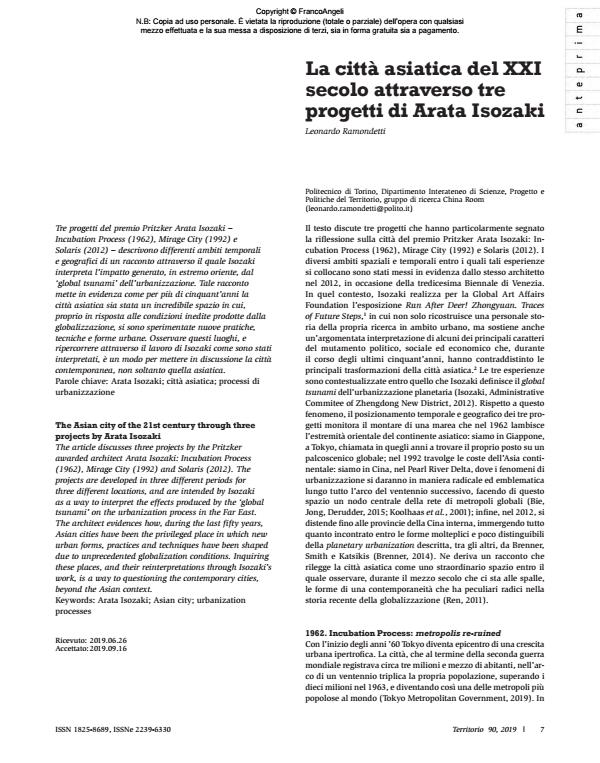The Asian city of the 21st century through three projects by Arata Isozaki
Journal title TERRITORIO
Author/s Leonardo Ramondetti
Publishing Year 2020 Issue 2019/90
Language Italian Pages 14 P. 7-20 File size 882 KB
DOI 10.3280/TR2019-090001
DOI is like a bar code for intellectual property: to have more infomation
click here
Below, you can see the article first page
If you want to buy this article in PDF format, you can do it, following the instructions to buy download credits

FrancoAngeli is member of Publishers International Linking Association, Inc (PILA), a not-for-profit association which run the CrossRef service enabling links to and from online scholarly content.
The article discusses three projects by the Pritzker awarded architect Arata Isozaki: Incubation Process (1962), Mirage City (1992) and Solaris (2012). The projects are developed in three different periods for three different locations, and are intended by Isozaki as a way to interpret the effects produced by the ‘global tsunami’ on the urbanization process in the Far East. The architect evidences how, during the last fifty years, Asian cities have been the privileged place in which new urban forms, practices and techniques have been shaped due to unprecedented globalization conditions. Inquiring these places, and their reinterpretations through Isozaki’s work, is a way to questioning the contemporary cities, beyond the Asian context.
Keywords: Arata Isozaki; Asian city; urbanization processes
- Projects for the Chinese city 2000–2020: the new towns by Kurokawa, Arup, and Isozaki in the Central Plains of China Leonardo Ramondetti, in Planning Perspectives /2025 pp.1
DOI: 10.1080/02665433.2025.2524694
Leonardo Ramondetti, La città asiatica del XXI secolo attraverso tre progetti di Arata Isozaki in "TERRITORIO" 90/2019, pp 7-20, DOI: 10.3280/TR2019-090001